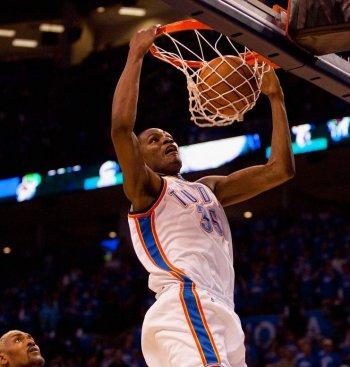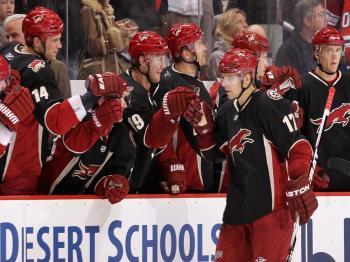It’s easy for people to take shots at the Canadian Football League (CFL) when comparing it to the NFL.
There are currently only eight teams. At one time, there were two teams with very similar names (Saskatchewan Roughriders and Ottawa Rough Riders). Another quirk is that sometimes one of the teams crosses over to the other division for the playoffs.
While the CFL has also been the butt of jokes on “The Simpsons” and “South Park,” the rules really promote an exciting brand of football.
A CFL field is decidedly bigger than an NFL field—measuring 150 yards by 65 yards, compared to the 120 yards by 53 1/3 yards dimensions of an NFL playing surface. This includes the end zones, which are 20 yards deep in the CFL as opposed to 10 yards deep in the NFL.
A bigger field means more real estate for players and bigger end zones mean more space for touchdowns, even if each team plays with one more player on the field.
There are only three downs in Canadian football, which puts an emphasis on gaining more yardage from each play on offense.
The passing game is a more effective way of moving down the field, especially with the slotback as another receiving option (the additional player on the field on offense). So generally, running backs get fewer touches and QBs throw the ball more.
In the NFL, the return man on a punt or kickoff can call for a fair catch by waving his arms. His team will start from where he caught the ball and the return man will not be subject to contact from opposing defenders.
There is no such rule in the CFL and the return man must be given a five-yard cushion from any defender.
Only after he has the ball in his possession can opposing special teams players attempt to tackle him.
Failure to give the return man five-yards to catch the ball results in a “no yards” penalty, which is worth either five or 15 yards depending on the severity of the infraction.
Allowing a player on the receiving team space to catch the punt or kickoff increases the chances of a return, which adds to the excitement of the game.
Pro Football Hall of Fame QB Warren Moon had the opportunity to play his trade on both sides of the border and has many fond memories of his time in Canada.
In a recent chat on ESPN, Moon said the following about his time in Canada.
“The CFL made me a more versatile QB because of all the things you had to do once you got on the field.”
“And if I wasn’t as versatile as I was, I wouldn’t have been as successful in all the different offenses that I was in, in the NFL.”
Former New England Patriots backup Doug Flutie, who won the CFL’s most outstanding player award six times, has similar sentiments.
“I thoroughly enjoyed my time in the CFL and have nothing but the highest respect for those who preceded me in the history of the league and those who have followed,” Flutie said shortly after being voted the greatest CFL player of all time in 2006.
The NFL might be marketed and packaged better with a richer TV contract but the CFL has its own things going for it.
There are currently only eight teams. At one time, there were two teams with very similar names (Saskatchewan Roughriders and Ottawa Rough Riders). Another quirk is that sometimes one of the teams crosses over to the other division for the playoffs.
While the CFL has also been the butt of jokes on “The Simpsons” and “South Park,” the rules really promote an exciting brand of football.
A CFL field is decidedly bigger than an NFL field—measuring 150 yards by 65 yards, compared to the 120 yards by 53 1/3 yards dimensions of an NFL playing surface. This includes the end zones, which are 20 yards deep in the CFL as opposed to 10 yards deep in the NFL.
A bigger field means more real estate for players and bigger end zones mean more space for touchdowns, even if each team plays with one more player on the field.
There are only three downs in Canadian football, which puts an emphasis on gaining more yardage from each play on offense.
The passing game is a more effective way of moving down the field, especially with the slotback as another receiving option (the additional player on the field on offense). So generally, running backs get fewer touches and QBs throw the ball more.
No Yards or Else Big Yards
In the NFL, the return man on a punt or kickoff can call for a fair catch by waving his arms. His team will start from where he caught the ball and the return man will not be subject to contact from opposing defenders.
There is no such rule in the CFL and the return man must be given a five-yard cushion from any defender.
Only after he has the ball in his possession can opposing special teams players attempt to tackle him.
Failure to give the return man five-yards to catch the ball results in a “no yards” penalty, which is worth either five or 15 yards depending on the severity of the infraction.
Allowing a player on the receiving team space to catch the punt or kickoff increases the chances of a return, which adds to the excitement of the game.
Warren Moon
Pro Football Hall of Fame QB Warren Moon had the opportunity to play his trade on both sides of the border and has many fond memories of his time in Canada.
In a recent chat on ESPN, Moon said the following about his time in Canada.
“The CFL made me a more versatile QB because of all the things you had to do once you got on the field.”
“And if I wasn’t as versatile as I was, I wouldn’t have been as successful in all the different offenses that I was in, in the NFL.”
Former New England Patriots backup Doug Flutie, who won the CFL’s most outstanding player award six times, has similar sentiments.
“I thoroughly enjoyed my time in the CFL and have nothing but the highest respect for those who preceded me in the history of the league and those who have followed,” Flutie said shortly after being voted the greatest CFL player of all time in 2006.
The NFL might be marketed and packaged better with a richer TV contract but the CFL has its own things going for it.






